Creating a garden that the entire family can enjoy is a rewarding challenge.
You can transform your yard into a vibrant space where everyone feels welcome to play and relax together by incorporating fun and functional design elements.
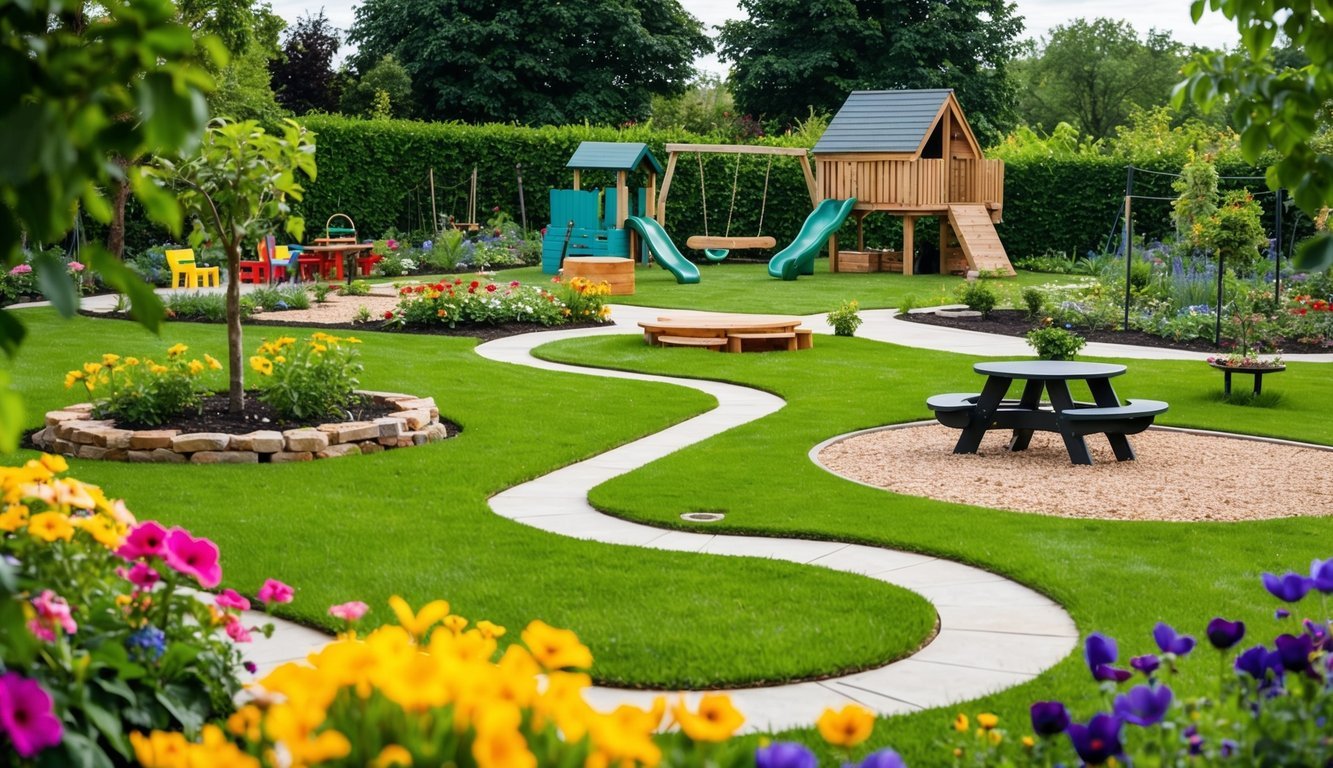
I love the idea of blending beauty with functionality, making sure that every member of the family has something to enjoy in the outdoor space.
Whether it’s engaging play areas for kids or cozy spots for adults to unwind, a well-planned garden can truly enhance family time.
Treehouse Corner
Creating a treehouse corner in your yard is a fantastic way to spark imagination.
I love how treehouses can become a child’s private retreat high up in the branches.
Designing a cozy spot can be as simple or elaborate as you want.
You can add a small porch, colorful murals, or even a lookout tower.
Choosing a tree that’s sturdy is essential for safety and fun.
Look for one with strong branches and ample space for a small structure.
Incorporating natural elements like vines or flowers can help the treehouse blend into its surroundings.
This makes the space feel inviting and magical.
Adding a few seating options beneath the tree can create an ideal hangout spot.
Whether it’s a picnic table or simple benches, it’s perfect for family gatherings.
I find that adding personal touches, like fairy lights or unique decorations, enhances the charm.
A well-designed treehouse corner becomes a beloved family landmark, creating lasting memories.
Edible Garden Patch
Creating an edible garden patch is one of my favorite ways to blend beauty and functionality in my yard.
It’s not just about growing food; it’s about making a vibrant space that the whole family can enjoy.
I like to incorporate fruits, vegetables, and herbs that are easy to maintain.
Carrots, lettuce, and tomatoes are always a hit.
Plus, herbs like basil and parsley add both flavor and fragrance to our meals.
To attract pollinators, I mix in some flowering plants such as lavender and bee balm.
This not only helps my garden thrive but also makes it visually appealing.
I plant in clusters for a more attractive arrangement.
Using raised beds or containers can add structure to the garden.
I love a half wine barrel for salad greens.
It looks rustic and offers easy access while saving space.
Mulching helps keep the soil healthy and reduces weeds, which allows us more time to enjoy the garden.
The whole family can participate in planting, watering, and harvesting.
It’s a great bonding activity that teaches kids about nature and sustainability.
3) Butterfly Haven
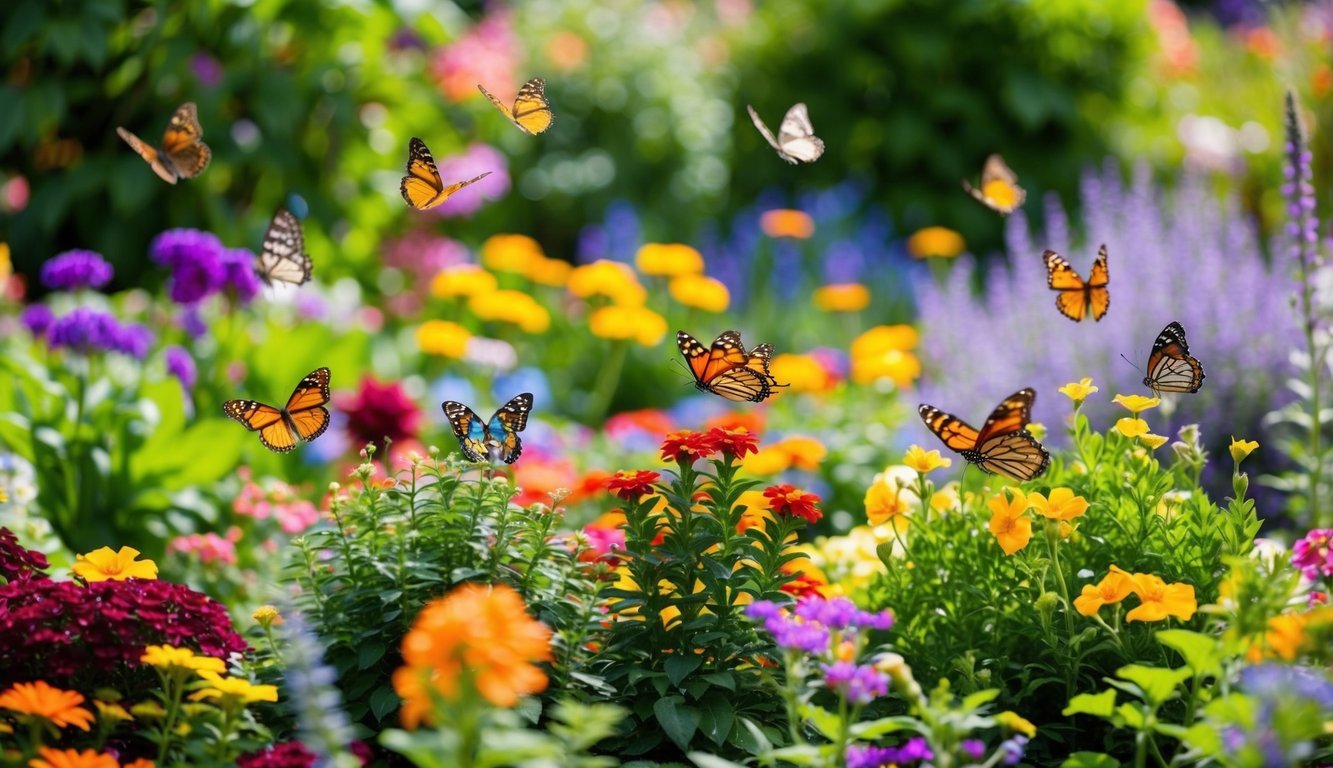
Creating a butterfly haven in my yard brings joy and color to my outdoor space.
I love to include a variety of flowers that attract butterflies, such as zinnias and black-eyed susans.
Their vibrant colors instantly brighten up the garden.
I also make sure to provide some shelter for butterflies.
Strategically placing a few bushes or small trees helps create a safe space for them to rest and hide.
Adding water sources, like a shallow dish with fresh water, is a nice touch, too.
To make it inviting, I avoid using pesticides.
They can harm butterflies and other beneficial insects.
Instead, I focus on natural pest control methods, which keeps my garden safe for those delicate creatures.
Setting up a cozy bench allows me to enjoy butterfly-watching.
Relaxing in my butterfly haven is a peaceful way to connect with nature and watch these beautiful insects flutter around.
4) Playful Pathways
Creating playful pathways in my garden adds a touch of whimsy and invites exploration.
I love using materials like large, irregular stones or colorful tiles.
These options not only look fun but also offer a sturdy surface for kids (and adults) to stroll on.
Incorporating curves and meandering designs makes the journey through my yard more engaging.
I often create S-shaped paths that weave through flowers and shrubs.
This layout encourages little ones to discover hidden spots.
I’ve also experimented with grass pathways.
Lining the edges with plants provides a soft, natural look.
It’s a simple way to blend the path seamlessly into the rest of the garden.
Lighting is another element that can enhance these pathways.
I like to add small solar lights along the edges, creating a magical atmosphere at night.
This not only looks great but also makes it safe for evening strolls.
A creative pathway can become a guiding thread through my outdoor space, leading to adventures and discoveries.
Whether it’s whimsical stepping stones or a grassy trail, these paths are a vital part of my family-friendly garden design.
5) Secret Fairy Garden
Creating a secret fairy garden in my yard has been one of the most delightful projects I’ve undertaken.
It feels like stepping into a whimsical world right at home.
I love starting with a quiet corner and adding lush ground cover.
Ferns, moss, and creeping thyme make great choices for a magical touch.
These plants not only look enchanting but also thrive in shaded spots.
Next, I incorporate colorful blooms to add contrast and charm.
Vining plants like morning glories or sweet peas work beautifully on trellises, making it feel more layered and inviting.
Pathways made from pebbles or small stones guide visitors through the magical landscape.
It’s a fun way to create structure while enhancing the charm.
Tiny fairy accessories like miniature houses, bridges, or swings bring the whole scene to life.
Each piece invites imagination and adds a personal touch to my hidden garden.
I enjoy spending time in my fairy garden, watching it flourish and change with the seasons.
Each visit feels like a small escape into a magical realm.
6) Sensory Plant Maze
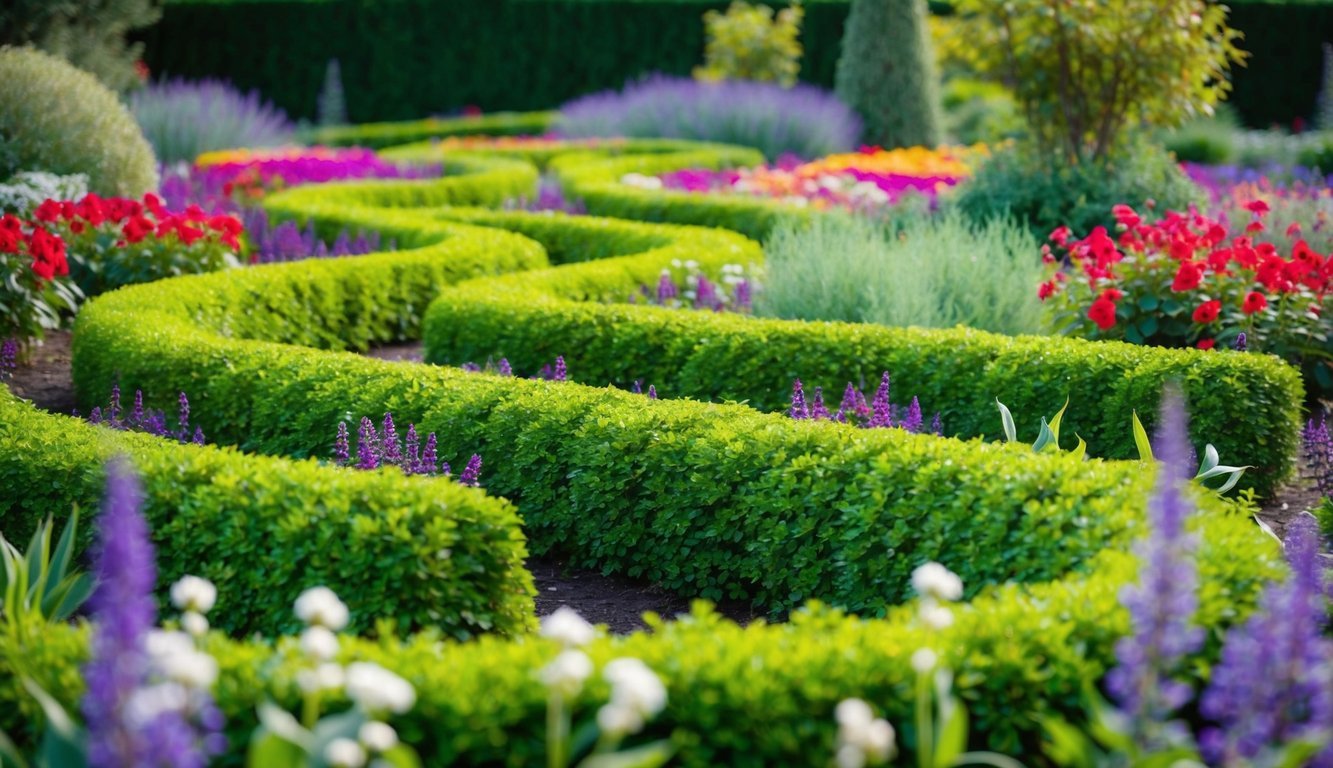
Creating a sensory plant maze is a fun way to engage the whole family.
I love how it incorporates different plants that stimulate all five senses.
To start, I select vibrant flowers and foliage that offer various textures and colors.
This not only creates visual interest but also invites children to explore and touch the plants.
I often include aromatic herbs like lavender and mint, which add fragrant scents.
The sounds of rustling leaves or gentle water features can also enhance the experience, making it lively and inviting.
A small pathway through the maze allows for easy exploration.
I make sure to keep the design accessible so that everyone can enjoy it.
Lighting plays an important role, too.
I use soft solar lights along the path, creating a magical atmosphere in the evening when my family can wander through the maze together.
This sensory plant maze has become a favorite spot for relaxation and play.
It’s a delightful way to encourage kids to connect with nature while having fun.
7) Nature Art Wall
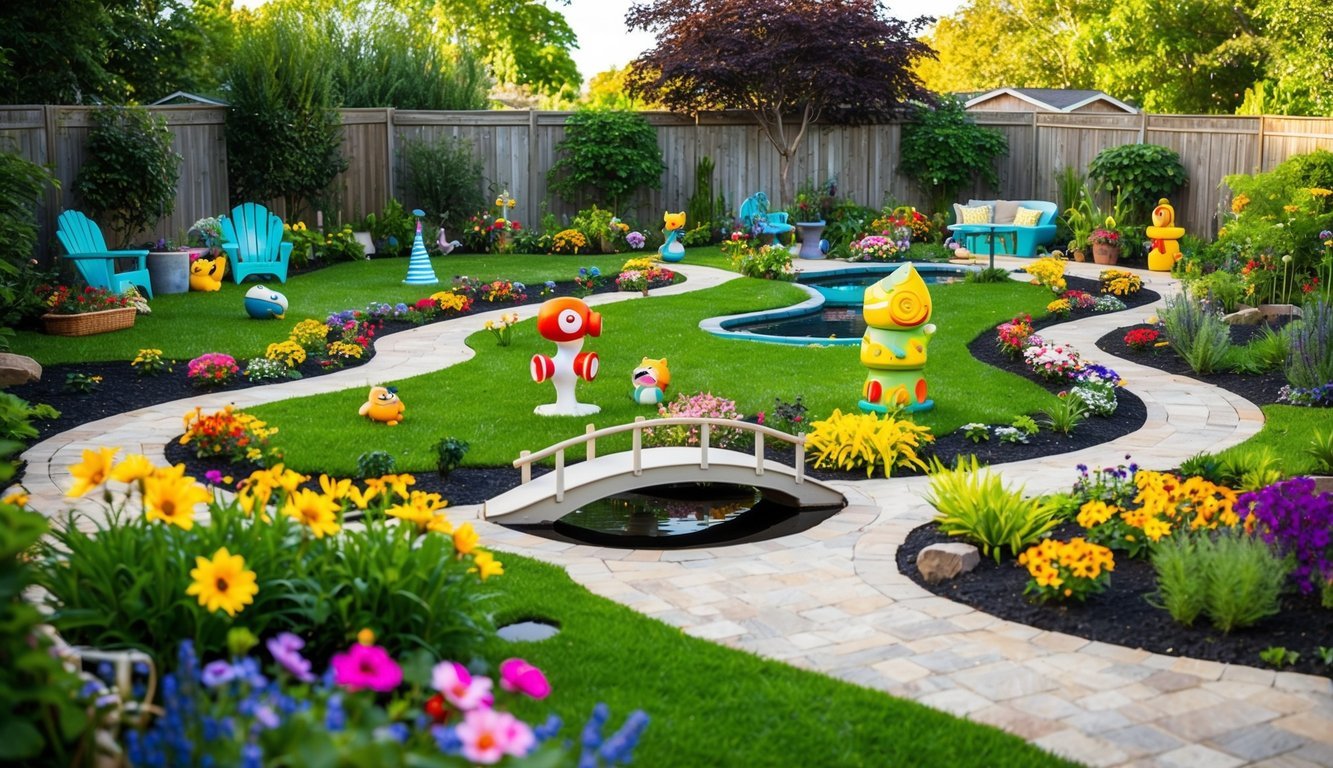
Creating a nature art wall is a fun and imaginative way to enhance my garden space.
I can use found objects, natural materials, or even repurpose yard clippings into stunning displays.
I love the idea of using old wooden pallets or fences as a backdrop.
These can serve as a canvas for hanging my artwork or even some potted plants.
Adding a few colorful pieces really brings the area to life.
I can also include family-friendly crafts, like painted rocks or leaf prints.
It’s a great way for kids to get involved and express their creativity.
Integrating a living wall with climbing plants adds another layer of beauty.
Vines can weave through the art, creating a dynamic look that changes with the seasons.
For an artistic twist, I might use metal wall art, which can withstand the elements while still looking stylish.
This combination of art and nature transforms my garden into an inviting place that reflects personal style and family memories.
Sandbox Sanctuary
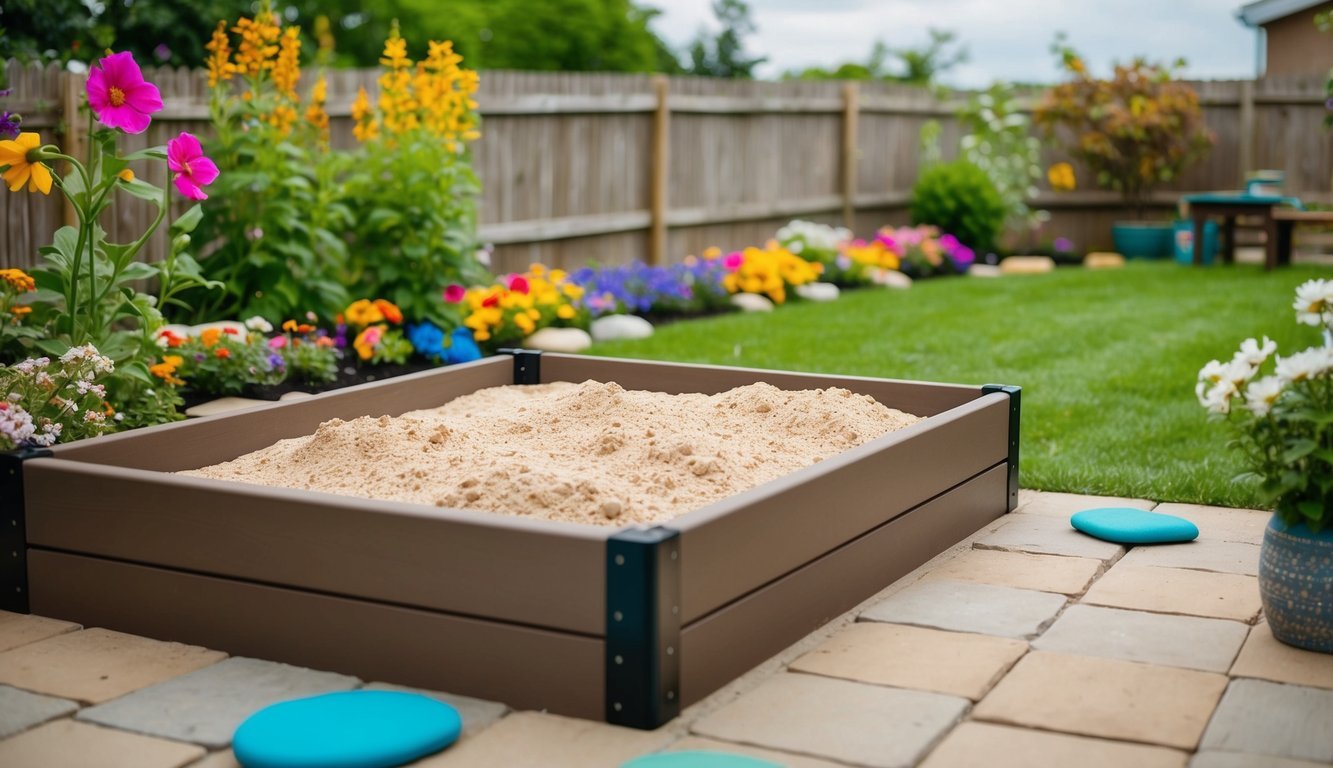
Creating a sandbox in my garden has been one of the best decisions for my family’s outdoor space.
It’s an inviting spot where kids can unleash their creativity while enjoying nature.
I love how easy it is to build a sandbox.
I can repurpose items like old wagons or bathtubs, which adds a unique touch.
A simple frame filled with sand provides endless entertainment.
To keep it functional, I placed a tarp underneath.
This helps with drainage and keeps the area tidy.
I also added a second tarp on top to protect the sand from rain and debris.
Setting the sandbox in a sunny spot is key.
Kids can play comfortably while soaking up some sun.
Plus, I often join them, which makes for quality family bonding time.
Decorating the area with colorful toys and tools enhances the sandbox vibe.
It turns into a mini beach right at home, perfect for imaginative play and messy fun.
DIY Birdhouse Village
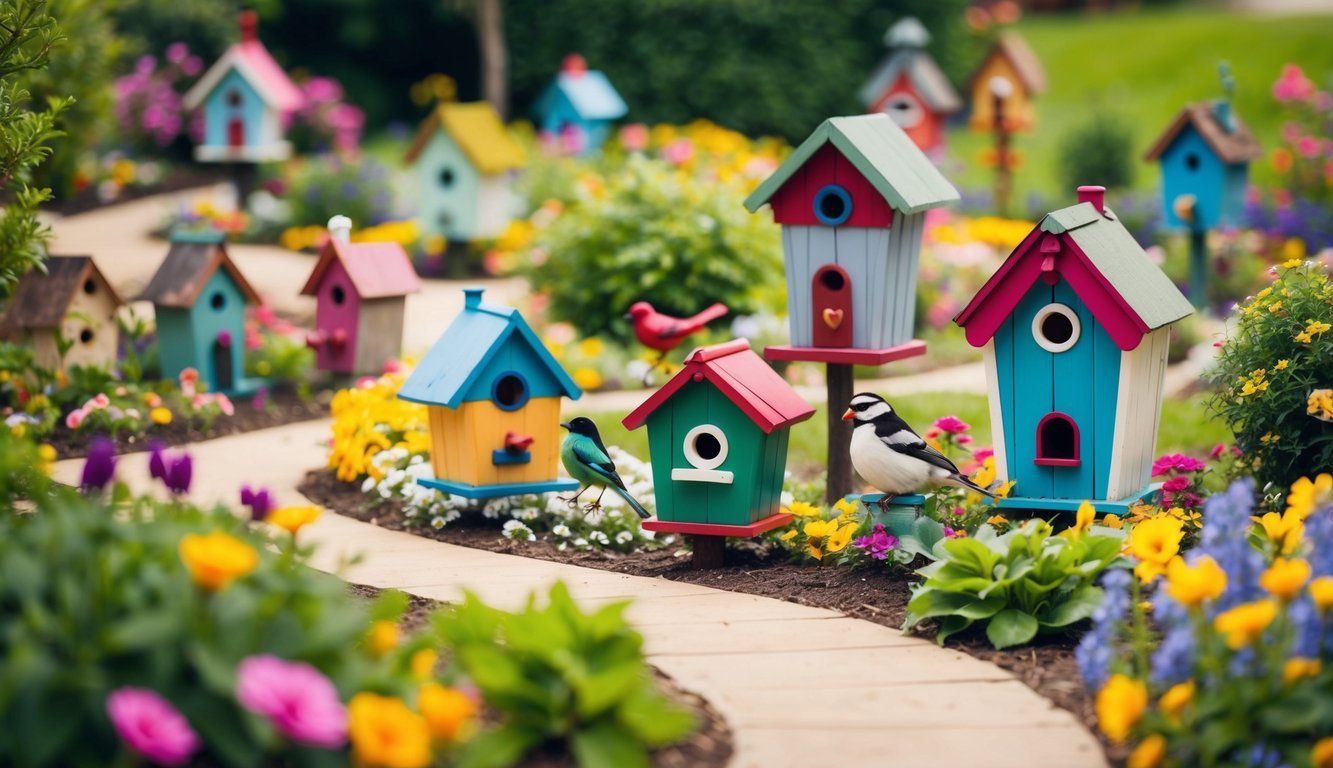
Creating a DIY birdhouse village is a fun and imaginative project for any garden.
I love the idea of designing a whimsical space that invites birds to settle in.
Start with simple birdhouse kits or even repurpose materials from around the house.
I find that using wood, paint, and a little creativity can transform a basic structure into something unique.
Each birdhouse can have its own character, from classic designs to colorful cottages.
I enjoy adding personal touches, like using stones or decorative elements to enhance the look.
DIY birdhouses can vary in size and style, allowing me to create a little community that looks vibrant in the garden.
Don’t forget to include perches for friendliness and predator guards for safety.
It’s great to see how these little homes attract different bird species throughout the seasons.
Installing my birdhouse village in a sunny spot helps attract birds, and I appreciate how it livens up the yard.
Plus, watching birds enjoy their new homes is incredibly rewarding.
Interactive Water Feature
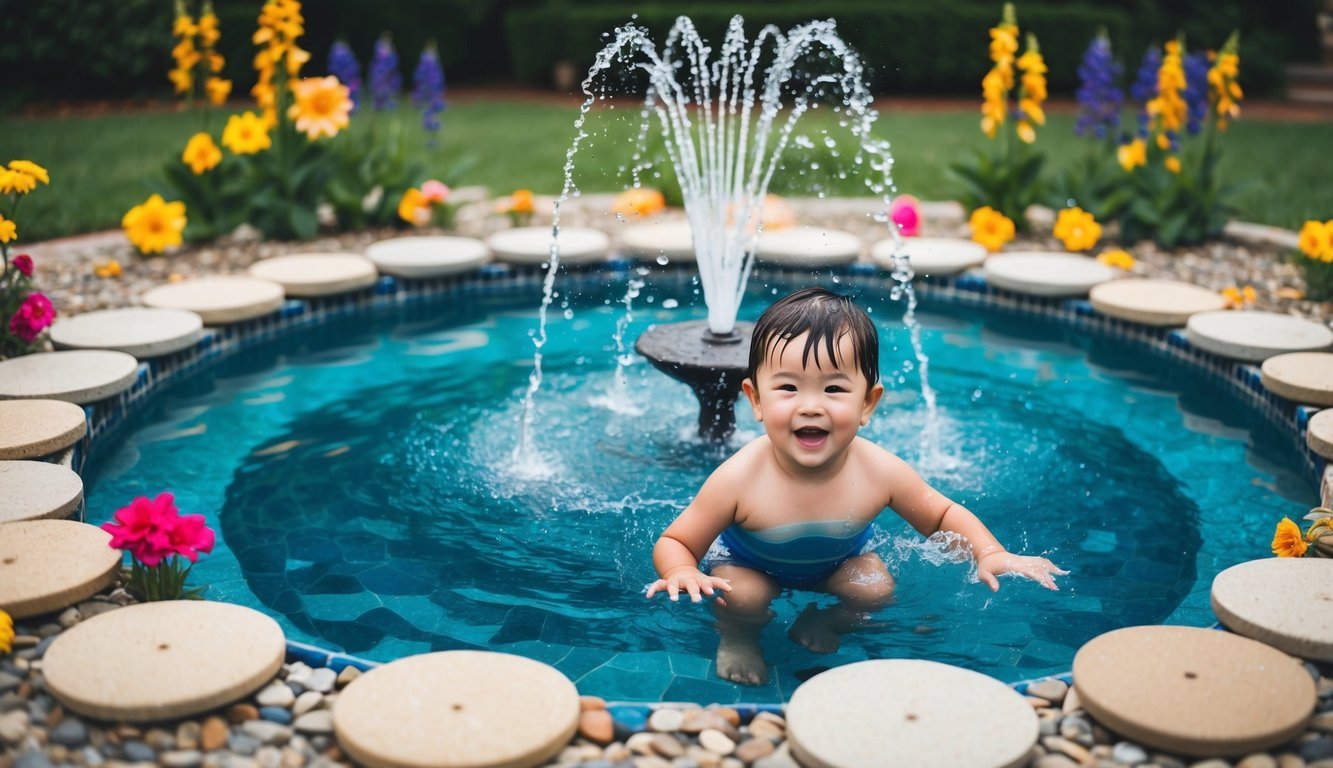
Creating an interactive water feature in my garden has transformed it into a playful oasis for my family.
Water has a natural charm that draws children in, making it perfect for engaging play.
I love the idea of a small pond or a splash pad.
Both options encourage hands-on fun without needing extensive maintenance.
Koi ponds can be particularly captivating, as the movement of the fish creates a sense of tranquility.
For safety, I ensure that any water features are shallow.
This makes it easy for kids to splash around while minimizing risks.
Adding stones or plants around the edge gives it a natural look while providing areas for exploration.
Another fun idea is a water wall or fountain that bubbles or sprays.
These can be both visually stunning and provide delightful sounds that add to the ambiance.
A misting feature can also be a great way to cool off during hot days.
I also include a seating area nearby to encourage relaxation for me while my kids enjoy the water.
Interactive features provide endless enjoyment and enhance my garden’s overall atmosphere.
Incorporating Playful Elements
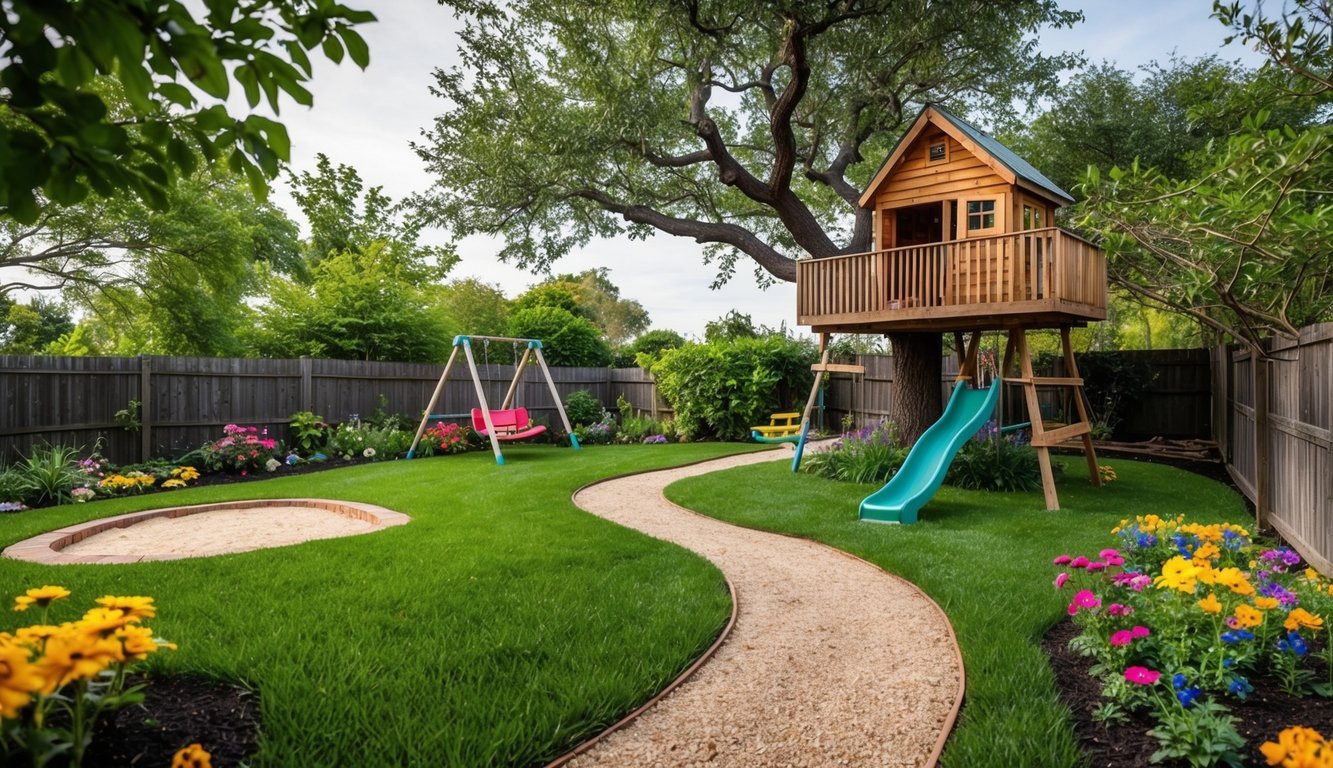
Creating a family-friendly yard means blending safety with fun.
I focus on designing spaces where kids can play freely while ensuring their well-being.
Here are some essential ideas.
Designing with Safety in Mind
When I design playful spaces, safety is a top priority.
I make sure to choose materials that are durable and non-toxic.
For instance, using soft grass or rubber mulch under climbing structures reduces the risk of injury from falls.
I also consider the layout.
Keeping play areas away from hard surfaces or sharp edges minimizes hazards.
I often use fencing to protect gardens from curious little ones while ensuring visibility for supervising adults.
Incorporating shade from trees or canopies is essential too; it keeps kids cool while they explore.
Additionally, I make sure that any playground equipment adheres to safety standards.
Regular maintenance checks are key to keeping everything in good shape.
Creating Zones for Different Age Groups
Different ages have unique play needs.
I like to create separate zones tailored to various age groups.
For toddlers, a sandbox or a water play table offers sensory experiences while being safe.
Meanwhile, slightly older children can enjoy a climbing frame or a small treehouse that encourage physical activity and imaginative play.
I also think about quiet zones for reading or relaxation.
A cozy corner with colorful cushions or a small garden nook lets kids unwind after active play.
This thoughtful zoning ensures that everyone, from toddlers to pre-teens, has a place to enjoy their own fun.
Using Native Plants for Easy Maintenance
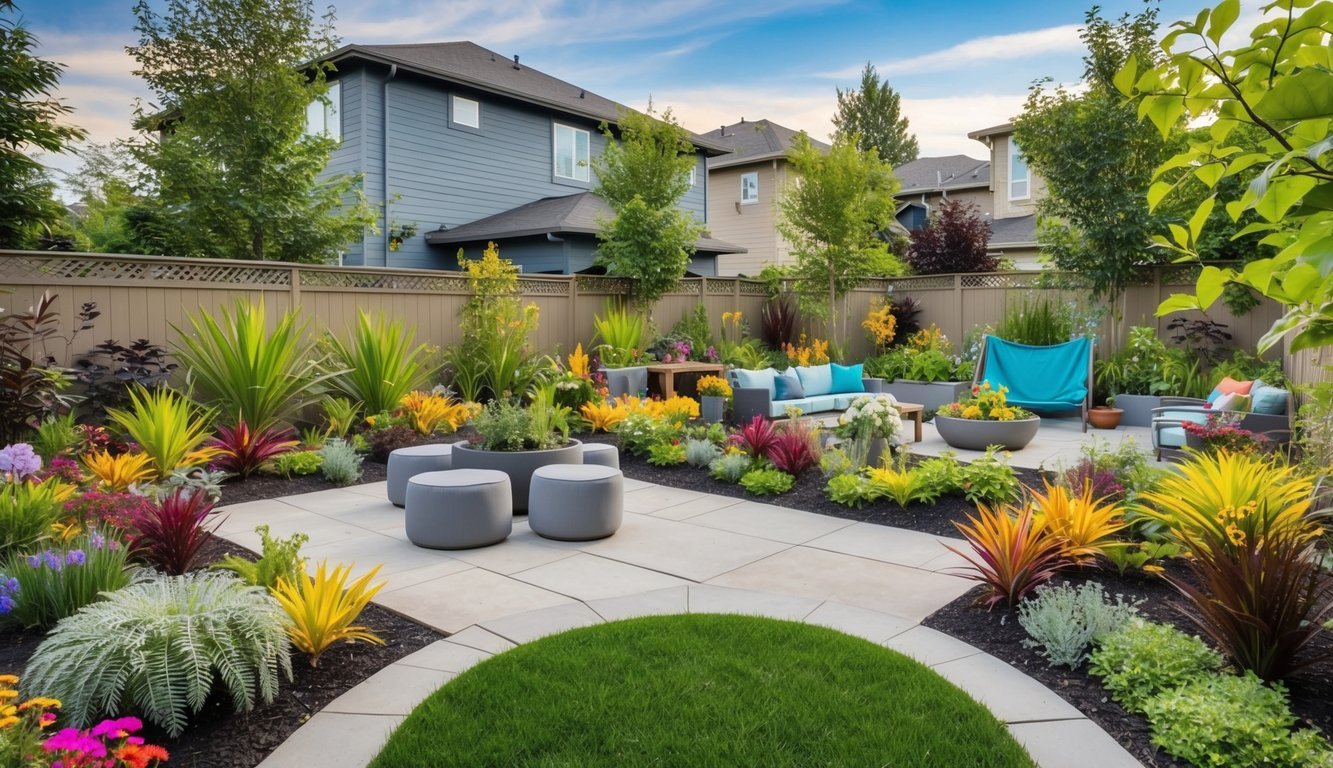
Incorporating native plants into your garden design makes it easier to maintain a vibrant and inviting outdoor space.
These plants are well-suited for local climates and conditions, allowing them to thrive with minimal effort.
Here’s how I leverage native flora for low-maintenance gardening.
Understanding Local Flora
Getting to know the native plants in my area is key.
These are species that have adapted to the local environment, meaning they require less water and care compared to non-native varieties.
Here are some benefits of using local flora:
- Resilience: Native plants can withstand local pests and diseases.
- Water Conservation: They typically need less irrigation once established.
- Soil Compatibility: They flourish in the existing soil without needing amendments.
I find that researching local plant guides or consulting with local garden centers helps me choose the right types for my yard.
Blending Aesthetics and Functionality
When I design my garden, I focus on blending beauty with practical use.
Native plants offer stunning looks while also serving ecological functions.
For example:
- Wildflowers: They add color and attract pollinators, enhancing biodiversity.
- Grasses: These can create visual interest and help prevent soil erosion.
- Shrubs: They provide natural barriers and habitats for local wildlife.
I group plants based on their light and water needs.
This creates a harmonious yet functional layout.
This method promotes both a lovely garden aesthetic and a thriving ecosystem.

